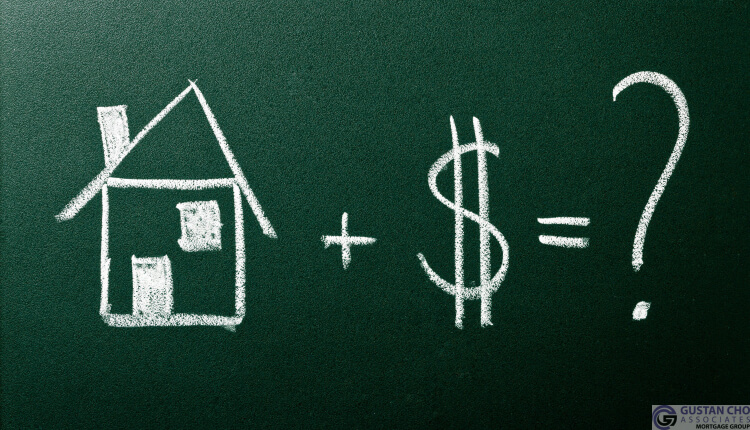Late Payments After Bankruptcy and Foreclosure Guidelines

This guide covers late payments after bankruptcy and foreclosure mortgage guidelines. To get approved for a loan after a serious event like bankruptcy or foreclosure, mortgage lenders want to see that you solved the problem that caused the bankruptcy or foreclosure. The problem is unlikely to happen again. You are managing your debt responsibly.
Home foreclosures and bankruptcies are not uncommon. There is no reason to be ashamed of past financial problems. You can be eligible for a new mortgage in as little as 12 months with many mainstream programs/
Homebuyers can qualify for a mortgage with portfolio or non-prime mortgages in as little as one day. But what happens if you complete bankruptcy or foreclosure and then have late payments? Will mortgage lenders even consider you for a home loan? In the following paragraphs, we will cover late payments after bankruptcy and foreclosure.
Qualifying for a Home Loan With Late Payments After Bankruptcy and Foreclosure
After a bankruptcy discharge, rebuilding your credit and savings back up to the home-buying level takes time. Lenders want to know if your financial situation has fully recovered before they approve you for a new mortgage. As such, lenders enforce a minimum waiting period, or “seasoning period,” before borrowers can apply for a mortgage after bankruptcy. The minimum waiting periods to get a mortgage after Chapter 7 are as follows:
- FHA loan: 2 years from the discharge date of Chapter 7 bankruptcy with re-established credit and three years after foreclosure, deed-in-lieu of foreclosure, or short sale.
- VA loan: 2 years after Chapter 7 bankruptcy, foreclosure, deed-in-lieu of foreclosure, or short sale
- USDA loan: 3 years after Chapter 7 bankruptcy, foreclosure, deed-in-lieu of foreclosure, or short sale
- Conforming (Fannie Mae or Freddie Mac) loan: 4 years after Chapter 7 bankruptcy, deed-in-lieu of foreclosure, or short sale.
Lender Overlays on Late Payments After Bankruptcy and Foreclosure
Note that individual lenders can and do impose stricter guidelines. Some lenders require borrowers to wait longer—perhaps three years—before applying for an FHA loan rather than the two-year minimum. Lenders call this stricter requirement an “overlay.” At Gustan Cho, we never apply overlays to agency mortgage program guidelines. With extenuating circumstances (more on those below), some borrowers can get a mortgage as soon as 12 months out of bankruptcy for government-backed loans. For most prospective homebuyers, though, lenders enforce the minimums.
Chapter 13 Bankruptcy Guidelines
What about Chapter 13 bankruptcies? VA and FHA borrowers can qualify for home loans after paying for 12 months into a Chapter 13 bankruptcy plan (with the approval of the bankruptcy trustee). Fannie Mae and Freddie Mac require a two-year waiting period from the discharge date for a Chapter 13 plan. Finally, so-called “non-prime” or “non-QM” loans are very lenient regarding bankruptcy or foreclosure. With 30% down, applicants are eligible for a mortgage one day out of bankruptcy and foreclosure.
Qualifying for a Home Loan After Foreclosure
The waiting period for a new mortgage after foreclosure depends on your chosen program. Conforming mortgages also depend on whether the event was a foreclosure, deed-in-lieu, or short sale. Finally, your waiting period may be shorter if the foreclosure was not your fault.
Fannie Mae and Freddie Mac Guidelines After Bankruptcy and Foreclosure
There’s a seven-year waiting period after a foreclosure with a conventional conforming loan for Fannie Mae or Freddie Mac-backed loans. You may be able to shorten the waiting period if you can prove that there were extenuating circumstances, meaning the foreclosure was not your fault.
You might get a loan after a three-year waiting period with at least 10% down if approved. If your down payment is less than 20%, you must get approved for private mortgage insurance (PMI).
Mortgage insurers often impose higher standards than Fannie Mae or Freddie Mac, so your approval following a foreclosure is not a done deal, even if you get approval from your lender. If you can’t get PMI, an FHA loan might work better. To qualify for a conforming loan after a deed-in-lieu of foreclosure or short sale, the mandatory waiting period is four years from the recorded date of the deed-in-lieu of foreclosure or the date of a short sale.
HUD Guidelines After Foreclosure on FHA Loans
There’s a three-year waiting period after foreclosure for FHA loans. FHA guidelines state that the borrower must have “re-established good credit since the foreclosure” before seeking a new FHA mortgage. HUD guidelines allow the waiting period to be shorter if extenuating circumstances exist. Those include “serious illness or death of a wage earner” or the shutdown of entire companies and widespread employee layoffs. The “inability to sell the property due to a job transfer or relocation” or divorce are not generally considered an extenuating circumstance.
VA Guidelines After Foreclosure on VA Loans
The waiting period after foreclosure is two years for a VA loan with re-established credit. The VA program does consider extenuating circumstances if the foreclosure was “beyond the control” of the borrower. You’ll need at least one year of good credit to qualify for a VA mortgage. If your foreclosed mortgage was a VA loan, you may not have any VA entitlement. In that case, you’ll have to try another program.
How Do Lenders View Late Payments After Bankruptcy and Foreclosure?
After bankruptcy or foreclosure, most lenders want to see that you have recovered from the event and are managing your debt responsibly. Many mortgage lenders will not accept borrowers with late payments after bankruptcy and foreclosure. Borrowers with late payments after bankruptcy and housing events are considered second offenders, and most lenders will want to avoid them. Unfortunately, unexpected circumstances happen. People mean well but may encounter financial hardship after bankruptcy and foreclosure. Consumers may go in arrears on their payments.
Credit Repair for Late Payments After Bankruptcy and Foreclosure
Some lenders will approve borrowers with late payments after bankruptcy and foreclosure if they get approval from an automated underwriting system (AUS). Most lenders, however, deploy “overlays” and refuse to approve a borrower with late payments after bankruptcy or foreclosure. They are allowed to approve these applicants but choose not to.
If you have late payments after a major derogatory credit event, you’ll probably need a lender that does not impose overlays.
To increase your chances for mortgage approval, write a letter explaining why you had late payments and documenting your reason if it was not your fault. If your payment was on time but reported late, attach a copy of your canceled check or bank statement to your letter. If your late payment was caused by the loss of a job, medical issues, or other extenuating circumstances, document this with your letter of explanation. Proof might include hospital bills, a doctor’s letter, a layoff notice, or disability filing.
Getting Approved With Late Payments After Bankruptcy and Foreclosure
No guidelines expressly prevent lenders from approving your application with late payments after a bankruptcy or foreclosure. If AUS is approved, Gustan Cho Associates Mortgage Group will approve borrowers with late payments after bankruptcy and foreclosure. Unfortunately, most lenders will not accept late payments after bankruptcy or a housing event. Homebuyers needing pre-approval with no mortgage overlays, please get in touch with us at Gustan Cho Associates at 800-900-8569 or text us for a faster response. Or email us at gcho@gustancho.com.







Responses